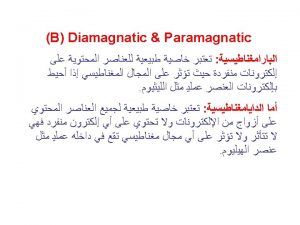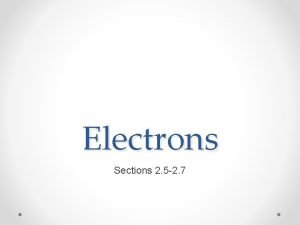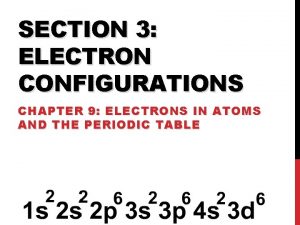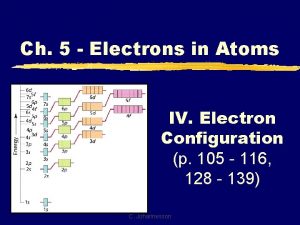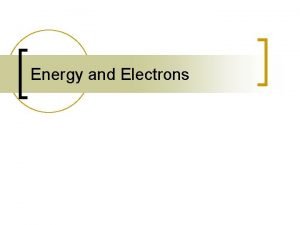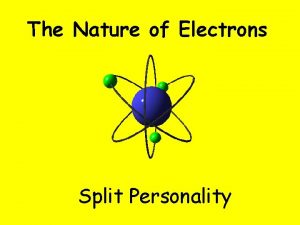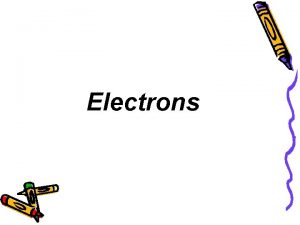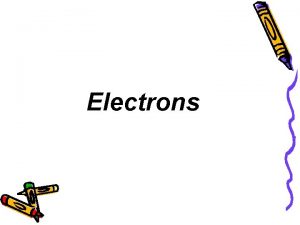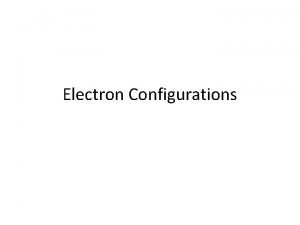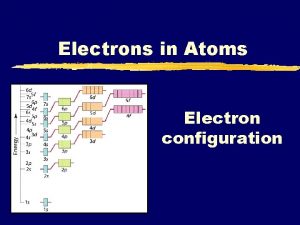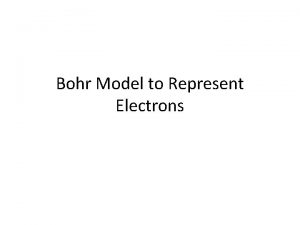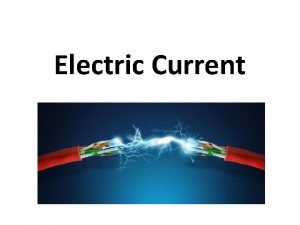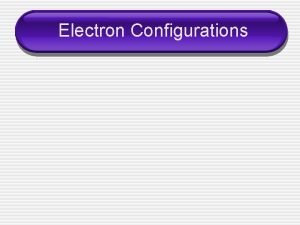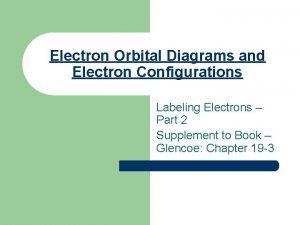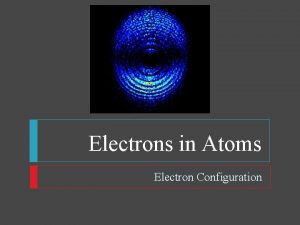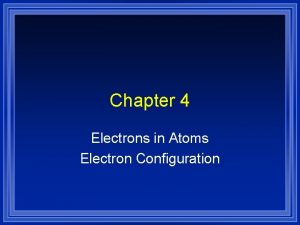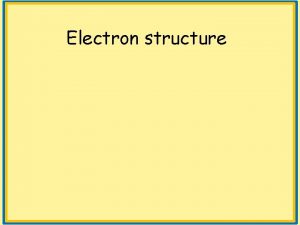Current flow versus Electron flow Electrons flow this























- Slides: 23


Current flow versus Electron flow Electrons flow this way. Conventional current flows this way.

What formula relates Charge, Current and Time? A current of 1 Ampere is flowing when 1 Coulomb of charge flows past a point in a circuit in 1 second. Charge = current x time (C) (A) (s) If a current of 5 A is flowing then 5 C of charge pass a point in 1 second. In general, if a steady current I (amperes) flows for time t (seconds) the charge Q (coulombs) passing any point is given by Q=Ixt

Worked example A current of 150 m. A flows around a circuit for 1 minute. How much electrical charge flows past a point in the circuit in this time? Solution

For you to do!! 1. Convert the following currents into amperes: a) 400 m. A b) 1500 m. A. Ans. = a) 400 m. A = 0. 4 A b) 1500 m. A = 1. 5 A 2. What charge is delivered if a current of 6 A flows for 10 seconds? Ans. = 60 C 3. What charge is delivered if a current of 300 m. A flows for 1 minute(60 seconds)? Ans. = 18 C

What is Ohm’s Law? The voltage dropped across a resistor is directly proportional to the current flowing through it, provided the temperature remains constant. What is the formula for Ohm’s law? Voltage (V) = Current (A) x resistance (Ω) V=Ix. R

Worked example on Ohm’s Law 2 A 8Ω V=?

Ammeters and Voltmeters Ammeters measure current and are placed in series in a circuit. A V Voltmeters measure voltage and are placed in parallel in a circuit.

Rules for Resistors in SERIES

Examples on Resistors in Series No. 1 9Ω 6Ω Ans. = 15 Ω No. 2 4Ω 6Ω 3Ω Ans. = 13 Ω

Rules for Resistors in PARALLEL

Examples on Resistors in Parallel 6Ω No. 1 Ans. = 3 Ω 6Ω No. 2 12 Ω Ans. = 6 Ω 12 Ω

For you to do!!!! No. 3 16 Ω 6Ω 16 Ω Ans. = 14 Ω

6Ω 6Ω No. 4 12 Ω Ans. = 6 Ω No. 5 10 Ω 2Ω 3Ω 10 Ω 2Ω Ans. = 9 Ω

Rules for SERIES CIRCUITS • Same current but …… • split voltage between them.

Equal resistors share the voltage between them!! 18 V ? 6 V 6 V 6 V

Rules for PARALLEL CIRCUITS • Same voltage but …… • split current between them.

A transformer is a device for increasing or decreasing an a. c. voltage.

Structure of Transformer

Circuit Symbol for Transformer

How Transformer works Laminated soft iron core Input voltage Output voltage (a. c. ) Primary coil Secondary coil

All transformers have three parts: 1. Primary coil – the incoming voltage Vp (voltage across primary coil) is connected across this coil. 2. Secondary coil – this provides the output voltage Vs (voltage across the secondary coil) to the external circuit. 3. Laminated iron core – this links the two coils magnetically. Notice that there is no electrical connection between the two coils, which are constructed using insulated wire.

Two Types of Transformer A step-up transformer increases the voltage there are more turns on the secondary than on the primary. A step-down transformer decreases the voltage - there are fewer turns on the secondary than on the primary. To step up the voltage by a factor of 10, there must be 10 times as many turns on the secondary coil as on the primary. The turns ratio tells us the factor by which the voltage will be changed.
 Pasteur point oxygen cascade
Pasteur point oxygen cascade Venturi mask vs face mask
Venturi mask vs face mask O2 liters to fio2
O2 liters to fio2 Unpaired electrons in electron configuration
Unpaired electrons in electron configuration Valence electrons in rubidium
Valence electrons in rubidium Copper subshell configuration
Copper subshell configuration Electron configuration for oxygen
Electron configuration for oxygen Line currents
Line currents Power formula three phase
Power formula three phase Energy band diagram of pnp transistor
Energy band diagram of pnp transistor Line current and phase current
Line current and phase current Drift current
Drift current Intrinsic semiconductor
Intrinsic semiconductor At cutoff the jfet channel is
At cutoff the jfet channel is Wye and delta connections
Wye and delta connections Holding current and latching current
Holding current and latching current Diffusion current formula
Diffusion current formula In generators the welding current is produced on the
In generators the welding current is produced on the Touch current vs leakage current
Touch current vs leakage current Mesh current method with current source
Mesh current method with current source Internal and external flow
Internal and external flow Internal versus external flow
Internal versus external flow Electrons flow from anode to cathode
Electrons flow from anode to cathode Balance redox
Balance redox



